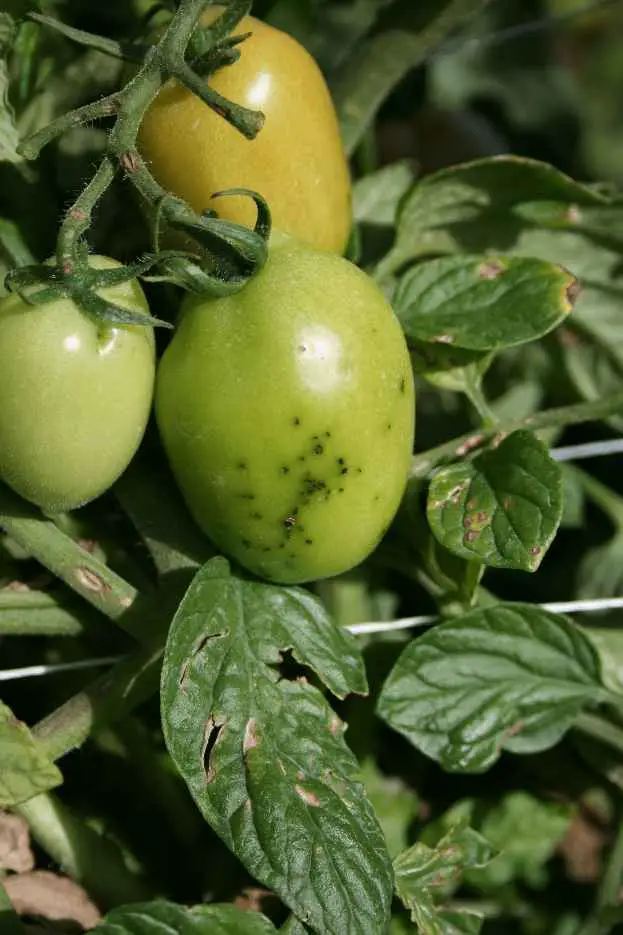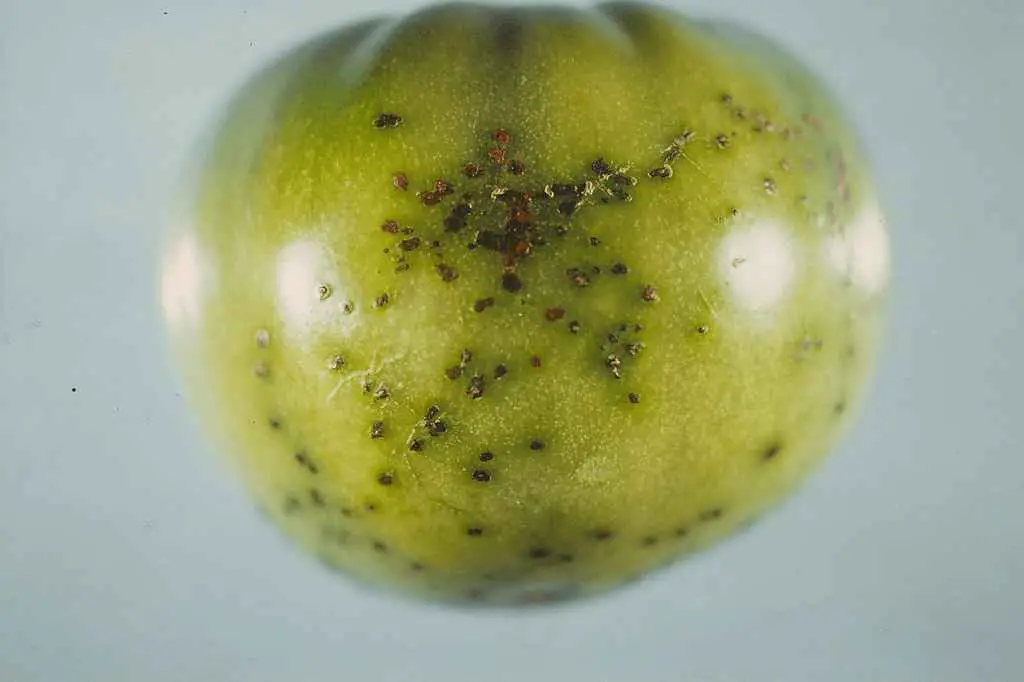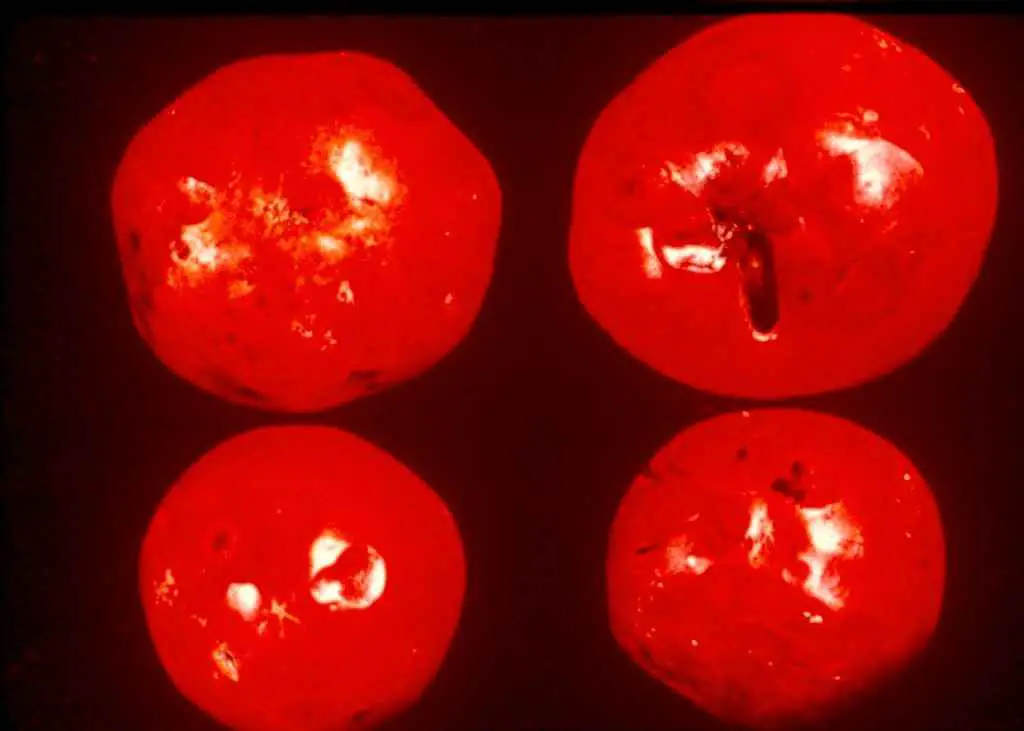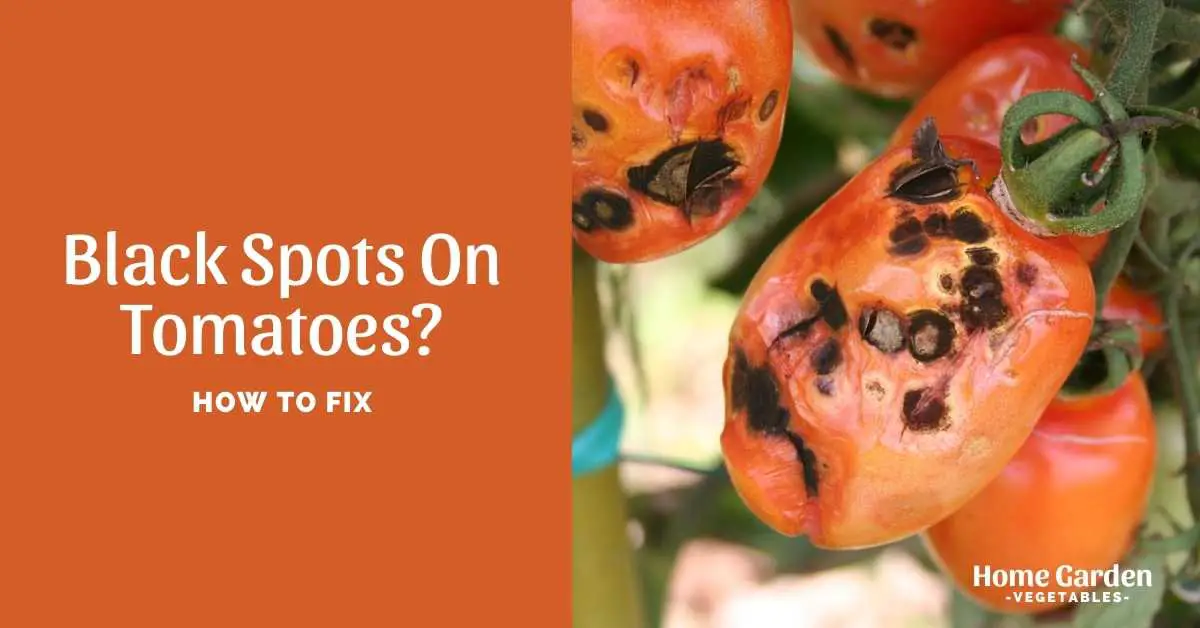You’ve loving created a sunny, nutrient-rich bed for your tomato plants and watered and fed them well. When you’ve done all the right things only to see those ripe, juicy tomatoes, you don’t want the results anything short of perfect.
Yet those ugly black spots appear out of nowhere to take all the charm away! Where did they come from? Is your tomato vine a lost cause now, or is there still a chance to do something about it? How to fix black spots on tomatoes? Keep reading and you’ll find all your answers.
Reader Poll: What online courses would interest you?

Most Common Reasons For Black Spots On Tomatoes And Their Fix
Tomato problems are widely popular in home gardens, particularly because they’re so simple to grow. Nevertheless, the vines are susceptible to many different kinds of problems. Black spots on tomatoes could itself mean several things. Here’s a list of the most common problems associated with black spots, together with their solutions.
Blossom End Rot

A brownish-black spot appearing on the bottom (or the blossom end) of the fruit is most likely the result of blossom end rot. Calcium deficiency in the plant leads to Black spots on bottom of tomatoes.
The affected tomatoes will be invaded by secondary organisms through the black spot, eventually rotting the entire fruit. There’s no saving them. Pick and discard the affected fruits to help the plant concentrate its energies on the development of healthy fruits.
Subscribe to our newsletter!
It might be too late to save the affected tomatoes, but you can still prevent the healthy fruits from catching the problem. Maintain consistent moisture, with 1 to 1.5 inches of water each week.
Don’t over-fertilize, especially with nitrogen-based fertilizers, since excess nitrogen will diminish the calcium absorption by the roots. Most soils already have an ample supply of calcium, but including crushed eggshells, lime or bonemeal may help reverse the situation.
Bacterial Speck On Tomatoes

Bacterial speck is a common disease that affects tomato plants early in the growing season. It starts with the leaves and spreads to the fruits in severe cases. Small black spots on green tomatoes have dark green haloes while those on ripe tomatoes have yellowish haloes. It’s caused by the bacterium Pseudomonas syringae pv.
It usually comes from contaminated tomato seeds and thrives in a cool, wet environment. Splashes while watering and handling healthy plants with the gardening tools used for infected plants spread the disease through your tomato crop. You can consume the unharmed tomatoes from the infected plant, but discard the ones that show symptoms.
The next thing on your mind must be how to fix black spots on tomatoes caused by bacterial speck. Unfortunately, once infected, the tomato plant cannot be salvaged. Let the plant continue through the growing season, harvesting all unblemished fruits from it. At the end of the growing season, remove it from the garden bed and destroy it. Plant the next tomato crop at a different location to prevent re-infection.
Bacterial speck on tomatoes can be prevented by using high-quality seed packages from reliable sources. If there’s a chance that seeds are contaminated, soak them in hot water for 20 minutes to kill the bacteria. Always water the plants at the base, to prevent the spread of bacterial speck or similar diseases.
Bacterial Spot
The symptoms of bacterial spot are quite similar to that of bacterial speck but are caused by different bacteria. Four different species Xanthomonas, are responsible for affecting tomato crops worldwide. On the fruit, the symptoms start on green tomatoes.
You’ll initially find tiny black spots on tomatoes that are raised and may have a white halo. As the fruit develops, the spots enlarge, haloes disappear and the spot may become sunken.
Similar to bacterial speck, the disease initiates from contaminated seeds and spreads by water splashes and the use of contaminated tools on healthy plants.
Unfortunately, there isn’t a cure for the infected plants. Since the disease spreads fast, the best course of action is to remove the infected plants and burn them. While you can consume the unblemished tomatoes, those with symptoms should be avoided. Burn the tomato debris at the end of the growing season and plant the next tomato crop at a different spot.
Anthracnose

Remove and discard the infected plants to prevent the spread of the disease. Regular application of fungicide or neem oil can also help control the spread. Since overripe fruits are more susceptible to anthracnose, pick tomatoes as soon as they turn red. Plant disease-resistant varieties and avoid overhead irrigation. Water at the base or use a drip irrigation system.
Alternaria Canker
Alternaria canler is a fungal disease of the tomato plant, caused by fungal pathogens of the genus Alternaria. Though the pathogen typically targets the leaves and stems, symptoms may also appear on the developing fruit. The fruit may exhibit brownish-black spots as a result of the disease.
Since most commercially available tomato varieties are resistant to the disease, chances that your tomato crop is exhibiting black spots on the fruits as a result of this disease are low. However, if you are growing susceptible varieties in North Carolina, the pathogen may cause problems.
Typical symptoms include large dark brown cankers on stems that often dry and split. The cankers form light and dark concentric rings on the stem, often near the soil line. These cankers grow and weaken the stem, eventually killing off the entire plant. The pathogen produces toxins that move up to the rest of the plant, resulting in lesions on the leaves and fruits.
The fungus can survive in the soil, feeding on dead and decaying organic matter and attack the plant when it comes in contact with the infested soil or when fungal spores are blown or splashed onto the healthy plant. Warm temperatures, typically those above 77°F, high humidity and rainfall favors the spread and development of Alternaria Canker.
Since the pathogen can survive indefinitely in the soil, crop rotation cannot control it. Fungicides aren’t of much help in controlling the disease on susceptible varieties. Planting resistant varieties, such as Mariana, and Florida 47R can effectively eliminate the possibilities of the disease in areas where it is likely to occur, such as coastal regions of California.
Are Tomatoes With Black Spots safe To Eat?
Although the black spots may not be harmful on their own, they present an entry point for secondary organisms to enter the fruit. That’s what makes them unsafe to eat.
Both bacterial speck and bacterial spot aren’t human pathogens, and do not directly make the infected fruit unsafe for consumption. That’s exactly why you can consume the fruits from infected plants that do not display any visible symptoms. However, are tomatoes with black spots safe to eat? No. pick the symptomatic tomatoes and discard them.
Tomatoes with anthracnose are safe to eat as long as you remove the infected portions. Make sure you discard the infected portions properly since they can contain spores that can spread the disease.
How To Prevent Black Spots In Tomatoes
You already know that black spots are often the result of fungal and bacterial infections or blossom end rot. Once the plant catches the problem, it’s not easy, and often impossible, to revive it completely. The best approach is to practice precautionary measures and avoid the disease from occuring in the first place.
Here are some practical steps you can take to keep your tomato plants free from diseases that cause black spots:
- Maintain Healthy Plants
Healthy plants are less susceptible to problems as compared to weak and stressed plants. Since they’re already struggling for survival, they are incapable of putting on strong defenses against diseases. Research the tomato variety you are growing to learn its requirements. Make sure the plants get everything they need to stay happy and healthy. At the minimum, ensure that they have moist and fertile soil to grow in. With water, nutrients and proper sunlight, tomato plants will stay healthy and show a stronger resistance against the most common diseases as compared to weak plants.
- Water Correctly
All of the tomato plant diseases on the list can occur due to incorrect watering. Fungal diseases are often spread through water splashes from the hose or watering can. Blossom end rot, too, can be a result of inconsistent watering through the growing season. Many of these problems in tomato plants can be prevented if you water correctly.
Watering inconsistencies lead to a reduced capability in tomato plants to absorb calcium, ultimately resulting in blossom end rot. This can be prevented by watering with consistency, offering about an inch of water each week. Water deeply once or twice a week to keep the soil consistently moist. You may have to adjust the frequencies if it’s too dry or rainy.
Damp and humid conditions created when water is allowed to pool around the plant is the key source of diseases. Avoid waterlogged soil. In addition, avoid wetting the foliage when watering. Use soaker hoses or drip irrigation to direct moisture towards the roots, while keeping the leaves and stems wet. If you use a watering can, point it towards the base of the plant, being careful not to wet the leaves while doing so.
Mulches conserve moisture and create a physical barrier between the soil-borne pathogens and the lower hanging branches of the tomato plants. Branches often catch the disease when rain splashes off the soil and onto the plants. In this case, mulch will act as a barrier, preventing fungal spores from landing on the plant. Straw, hay or compost serves as a good mulch for tomato plants. Make sure the mulching material does not contact the stems. Wet mulch can lead to the rotting of the stem with constant contact.
- Don’t Disturb The Plant When Wet
Don’t work in the garden when the plants are wet, for example after the rain. Water may carry spores, and you may transfer spores from one plant to the next, spreading diseases through the crop. Instead, wait for the foliage to dry before handling the tomato plants.
- Plant Resistant Varieties
You can purchase varieties that are resistant to diseases like Alternaria Canker. Blossom end rot is a deficiency, not a disease, so you might not find varieties that are completely resistant to the problem. However, certain tomato varieties, like Mountain Delight, offer a higher tolerance against the problem compared to others.
- Maintain Air Circulation
Optimal air circulation keeps the leaves and atmosphere dry around the plants, preventing many diseases. For this, you’ll need to ensure proper, recommended spacing between the individual tomato plants.
Prune out the lower branches on mature tomato plants and trellis them to maintain good airflow between the foliage and optimal exposure to sunlight.
- Harvest On Time
Anthracnose often hits the fruit after they ripen. Avoid the problem by picking the fruits as soon as they turn ripe. Harvesting promptly reduces the chances of bruising, rotting and other problems associated with these. If a heavy rainfall is forecasted in the coming days and the fruits have only partially changed color, remove them from the vines and allow them to ripen indoors.
- Cleanup At The End Of The Season
Clean the garden bed of all the tomato plant debris at the end of the season. If the plants have experienced diseases in the season, collect it and either burn it, or toss it in the trash. Never compost diseased plant debris.


Thanks for the good tips